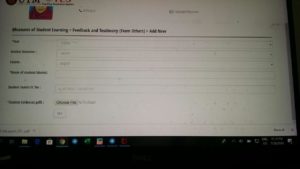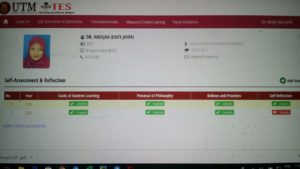In your Measures of Student Learning heading (once you click this heading), there will appear 1) Average Score in ePPP, 2) Feedback and testimony (from ePPP), and 3) Feedback and testimony (from others)
You CANNOT make any change in the first two sections i.e. ) Average Score in ePPP and 2) Feedback and testimony (from ePPP). But what you can add is on 3) Feedback and testimony (from others).
What should you do?
- Search any feedback or testimony that your student(s) or former students have given you. If they give you cards or anything written on a piece of paper, scan the card/paper and save it in PDF file. If they post on their FB page with your picture saying “Thank you” and whatsnot, screen shot that page and save it in PDF file. If they give WhatsApp message to thank you, screen shot that and save it in PDF file.
- Once you click on Measure of Student Learning heading, you will see 1) Average Score in ePPP, 2) Feedback and testimony (from ePPP), and 3) Feedback and testimony (from others).
- Choose and click Feedback and testimony (from others).
- Click +ADD NEW, you will see the following
a) Year
b) Session semester
c) Course
d) *Name of Student/alumni
e) Student matric/IC no.
f) *Student Evidence (.pdf)
5. The title with * is compulsory. So, you need to fill in or upload relevant evidence at the respective section.
NOTE: If you want to know more about how to complete your TESDCP, go to the following link



